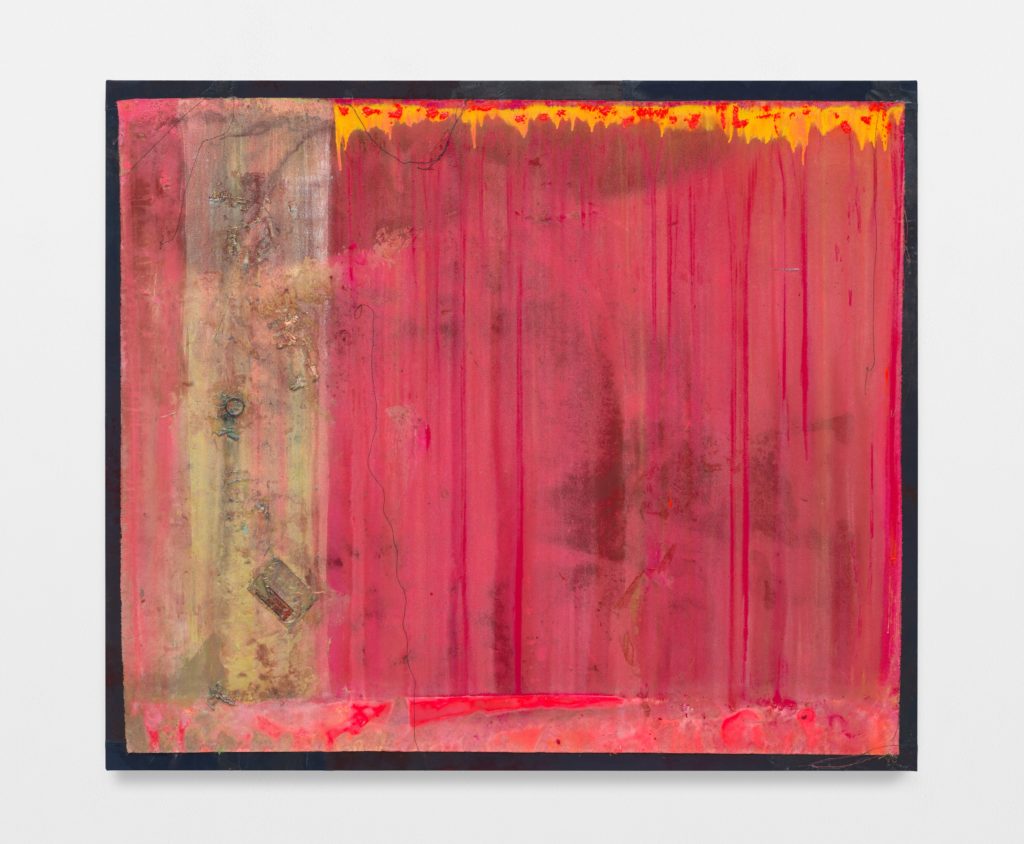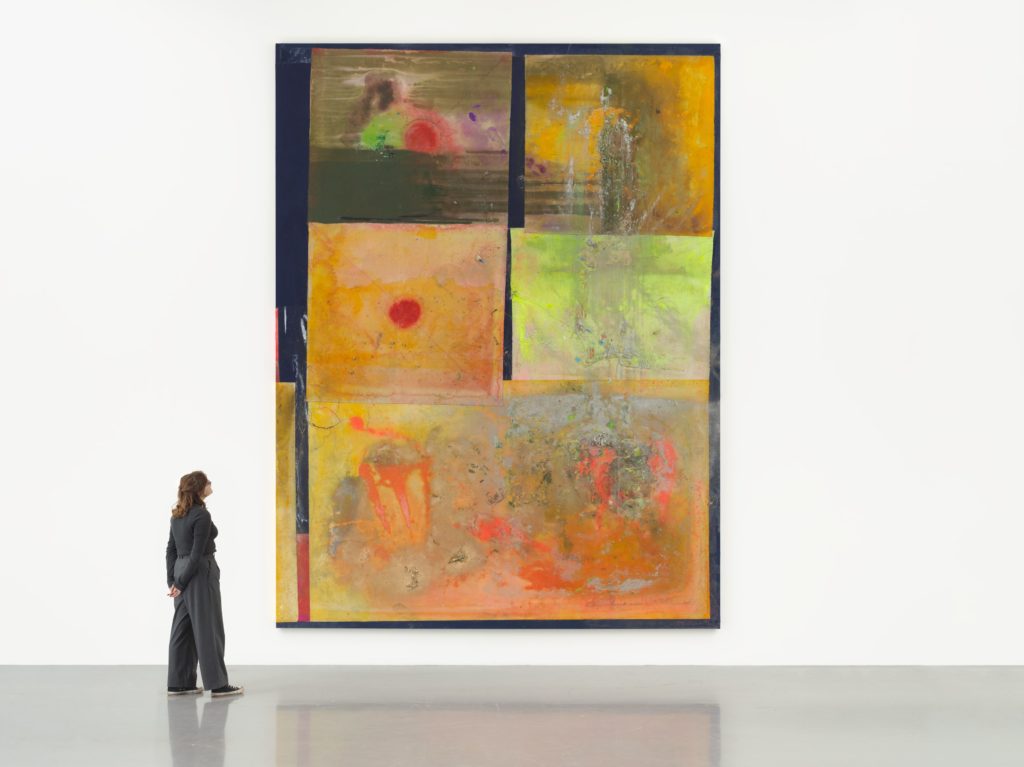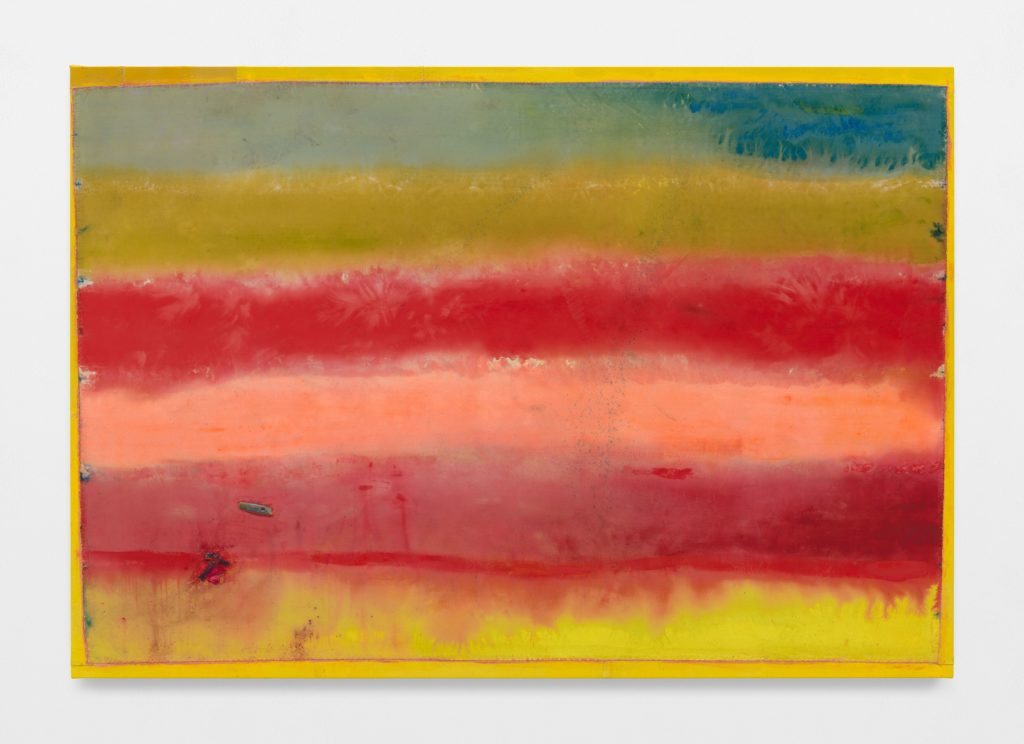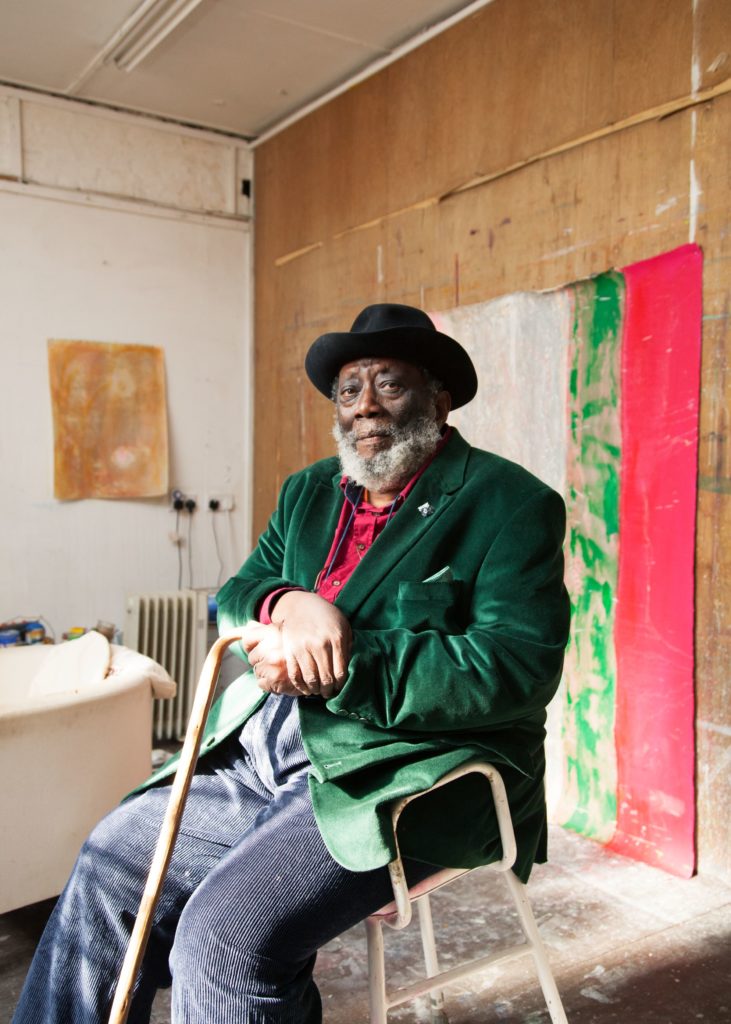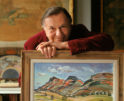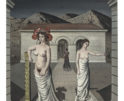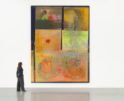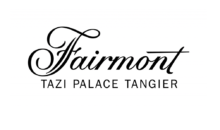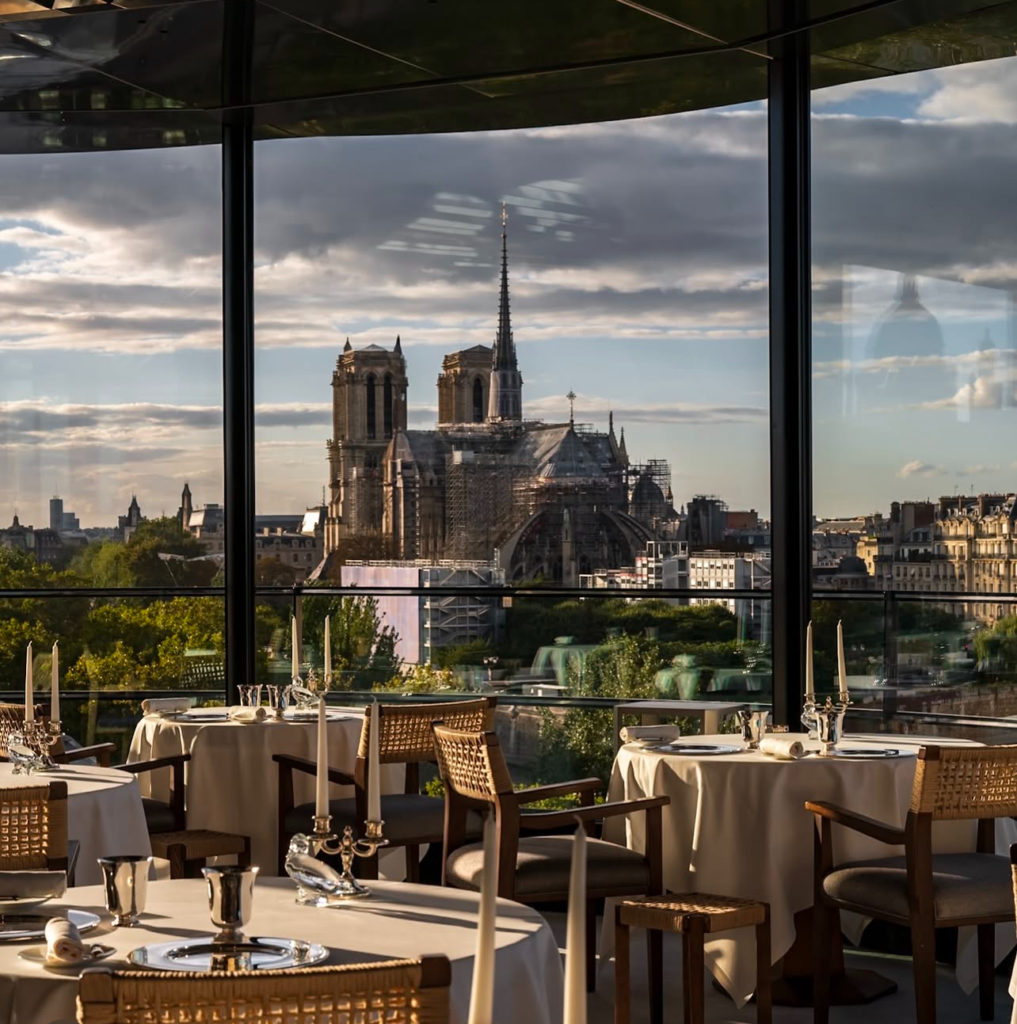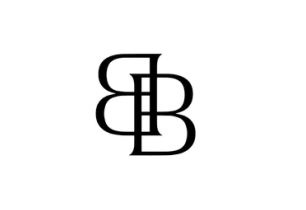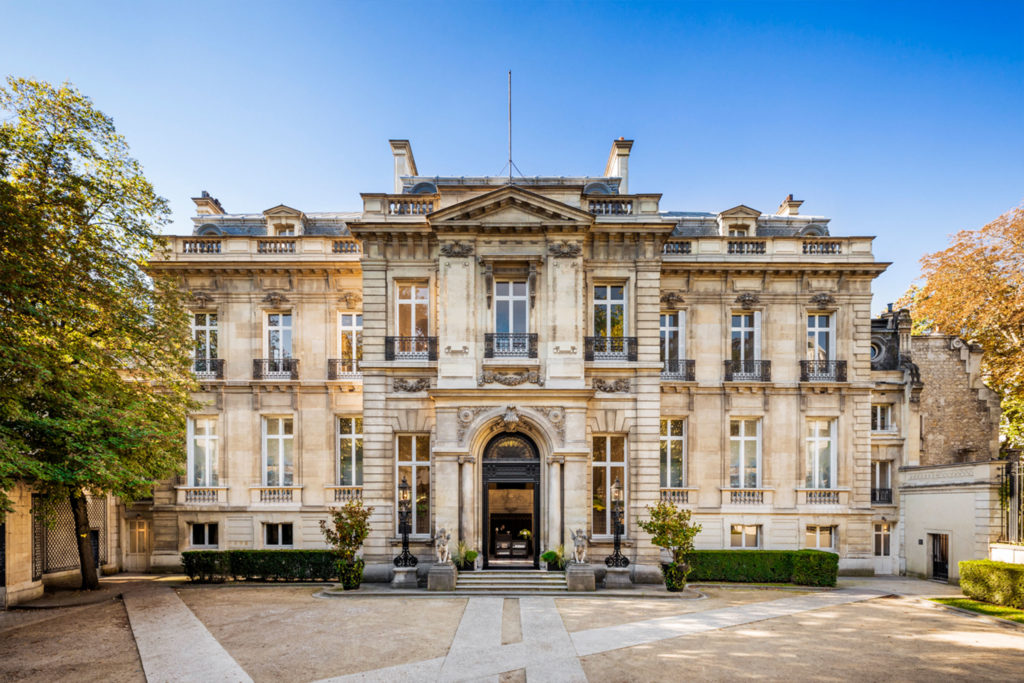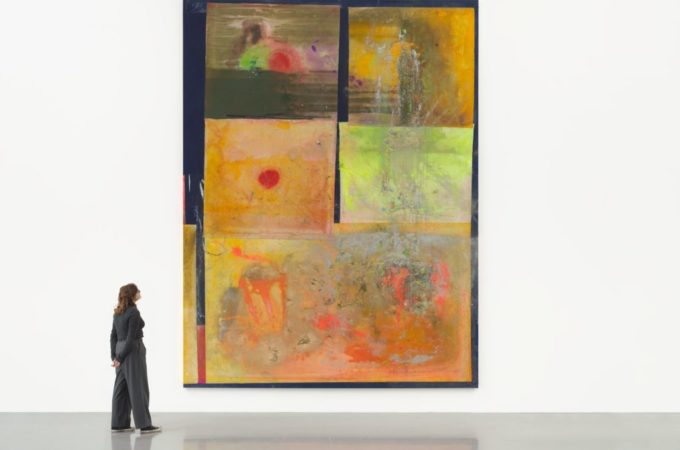
Frank Bowling at 90 Years Young: Still Reinventing Art, One Bold Collage at a Time February 3, 2025Art Events, Paris0 Comments
Frank Bowling. Collage
March 22 – May 26, 2025
Hauser & Wirth Paris
26 bis Rue François 1er, 75008 Paris
Frank Bowling: A Lifetime of Innovation Unfolds in ‘Collage’ at Hauser & Wirth Paris
Few artists embody the relentless spirit of reinvention quite like Sir Frank Bowling. At 90 years old, he still paints daily, his work ever-evolving, ever-expanding – an exploration of color, texture, and materiality that refuses to stand still. Now, for the first time in France, Hauser & Wirth Paris presents ‘Frank Bowling. Collage’, an exhibition that brings together two decades of his groundbreaking practice, from the early 2000s to today, anchored by four new monumental works.
For Bowling, collage is more than a technique – it is a philosophy of layering, memory, and transformation. His approach, deeply influenced by Henri Matisse’s late cut-outs, fuses painting, sculpture, and architecture into canvases that challenge the boundaries of traditional abstraction.
Frank Bowling – Pallings, 2024
Acrylic, acrylic gel and found objects on canvas with marouflage
192.5 x 226.6 x 4.8 cm / 75 3/4 x 89 1/4 x 1 7/8 in
Photo: Alex Delfanne
A Vision in Layers: The Art of Frank Bowling
Bowling has never been one to conform. His early experiments with collage date back to the 1960s, an era in which he sought to merge color, movement, and physicality into compositions that defied categorization. His bold ambition? To create work that combines the grandeur of painting, the structure of sculpture, and the fluidity of architecture – a radical vision that has propelled his artistic practice for over six decades.
His latest works, including the towering ‘Skid’ (2023), exemplify this fearless innovation. At over 4.4 meters in height, this piece is an assemblage of canvas, marouflage (a traditional gluing technique), and unexpected found objects- medical plastic tubing, stray pieces of fabric, and torn fragments of daily life. These elements, set in translucent acrylic gels, appear to float and shift, as if suspended in time. “I want to throw things in and watch them swim before they settle,” Bowling muses.
Frank Bowling – Skid, 2023
Acrylic, acrylic gel and found objects on collaged
canvas with marouflage
442.4 x 336.5 x 5.4 cm / 174 1/8 x 132 1/2 x 2 1/8 in
Photo: Anna Arca
Frank Bowling – Water, 2024
Acrylic, acrylic gel and found objects on canvas with marouflage
193.7 x 280 x 6.4 cm / 76 1/4 x 110 1/4 x 2 1/2 in
Photo: Alex Delfanne
Collage as an Autobiography
Bowling’s work is more than an aesthetic exercise – it is a deeply personal and historical archive. His use of found materials – children’s toys, fabric scraps, and medical supplies – bridges the past and present, turning his canvases into autobiographical landscapes. In ‘Back to Snail’ (2000), for example, he pays homage to Matisse’s ‘L’Escargot’ (1953), embedding the spiral motif in richly layered textures that evoke both personal and collective memory.
Since the 1980s, Bowling has expanded his material vocabulary, incorporating metallic pigments, sewn canvases, and thick impasto textures, further pushing the limits of abstraction. Each piece tells a story – not just of artistic evolution, but of survival, migration, and reinvention.
Sir Frank Bowling in his London Studio (2017) – © Alastair Levy
A Career Defined by Defiance
Born in Guyana in 1934, Bowling arrived in London in 1953 and quickly made a name for himself on the city’s avant-garde scene. By the mid-1960s, he had relocated to New York, immersing himself in the city’s Modernist movement. His breakthrough came with his ‘Map Paintings’ (1967-1971) – a series that reimagined global cartography through the lens of stencil, abstraction, and cultural identity, later exhibited at the Whitney Museum of American Art in 1971.
His work evolved into a dance between chance and control, most notably in his ‘Poured Paintings’ (1973-1978), created by pouring paint from two meters high, allowing gravity to shape his compositions. Over time, his practice became even more tactile and sculptural, an approach that continues today, as seen in his most recent works on view in Paris.
Bowling’s list of accolades is as monumental as his canvases: a Royal Academy membership in 2005, a British Empire honor in 2008, and a knighthood in 2020. His work resides in over sixty major museum collections worldwide, and his impact on contemporary abstraction is undeniable.
A Final Thought from Shari
Frank Bowling is proof that true artists never stop experimenting. His work is not about looking back – but about constantly pushing forward, embracing color, texture, and history in a way that feels utterly boundless.
Standing before his canvases, you don’t just see paint – you feel time itself, layered and shifting, alive with movement and meaning. And if this exhibition tells us anything, it’s that at 90, Bowling isn’t winding down – he’s still just getting started.
All images: © Frank Bowling. All Rights Reserved, DACS 2025 – Courtesy the artist and Hauser & Wirth
Tags: Art Exhibition Paris 2025, Art Magazine Art magazine Paris, Frank Bowling, Hauser & Wirth Paris, influenced by Henri Matisse, Sculptures, What We Adore Magazine
Recommended
-
Barry Humphries’ Curated Legacy: A Collector’s Treasures to be Auctioned at Christie’s LondonFebruary 4th, 2025
-
Step Into a Surreal Dream: Paul Delvaux’s Masterpieces Headline Christie’s March AuctionFebruary 4th, 2025
-
PRINTEMPS 2025 at Palais de Tokyo: A Bold Celebration of Art, Movement, and Collective JoyFebruary 4th, 2025
-
Max Mara’s ‘Time for Women!’ at Palazzo Strozzi: A Two-Decade Celebration of Female Artistic PowerFebruary 3rd, 2025
-
Frank Bowling at 90 Years Young: Still Reinventing Art, One Bold Collage at a TimeFebruary 3rd, 2025


